It’s business as usual for us at Instafloss, which means there isn’t much to write about in this update. At least not much about what we’re currently doing. However, that's not to say we don’t have anything to write about.
Entering into a new year is always a time for reflection, so let’s take a look back all the way to May 2023 to see some more of the challenges we overcame before production really got underway.
We got a lot of comments after Ralf muscled his way into our August update with many of you commenting that you enjoyed the little sneak peek into all the tiny trials and tribulations that go into the adventure that is producing the Instafloss
So Ralf is back! However, we’ve trimmed this section down to one part’s ‘adventure’ for time and space reasons. And we’d start talking about the part now (the ‘spring retainer’) but Ralf wants to make sure you all know he has white hairs now. He’s very proud of the one in his eyebrow. Unlike myself, my white eyebrow hair grows quickly and is triple the length of the others, requiring me to trim it frequently.
This is why we try to keep him away from updates, people. Even we can’t resist going on tangents when he’s around!
Anyway…
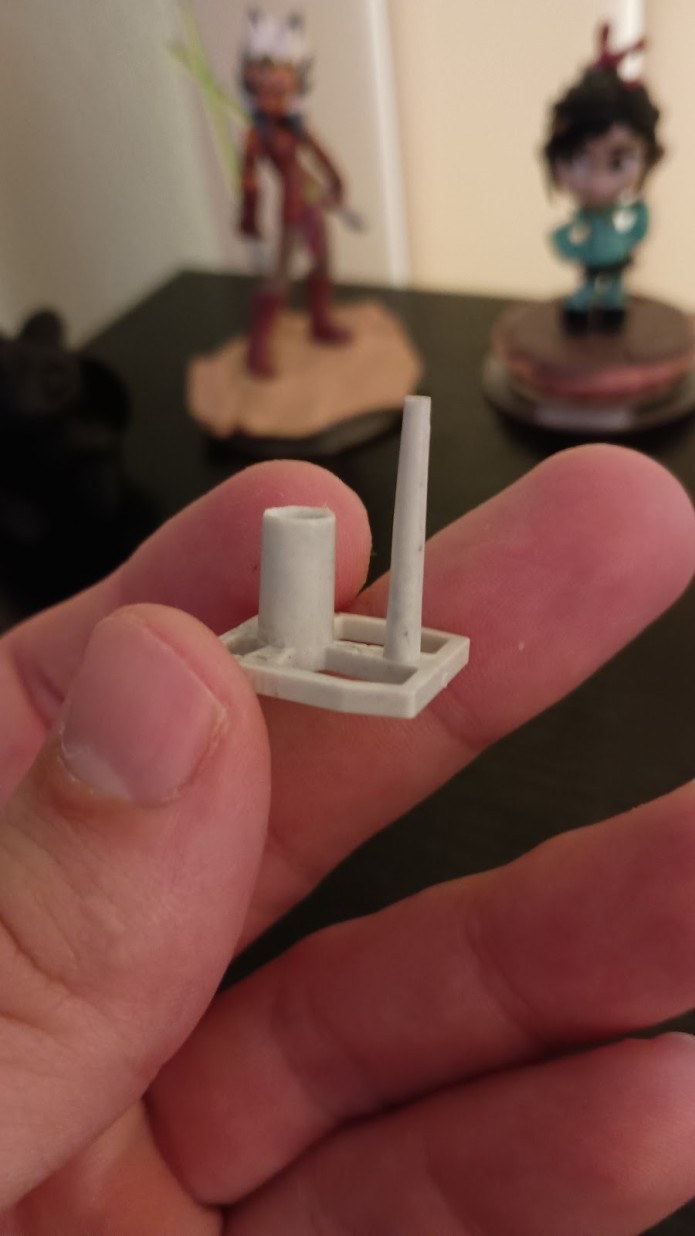
This is the spring retainer. It holds the plunger and spring in place, and the three of them together form the “inlet valve” sub assembly. This part does several jobs, one of which is that it aligns the plunger with the hole that water comes in. Obviously, if the plunger does not line up, it won’t seal, and the pump will perform poorly.
Today’s focus concerns this particular area:
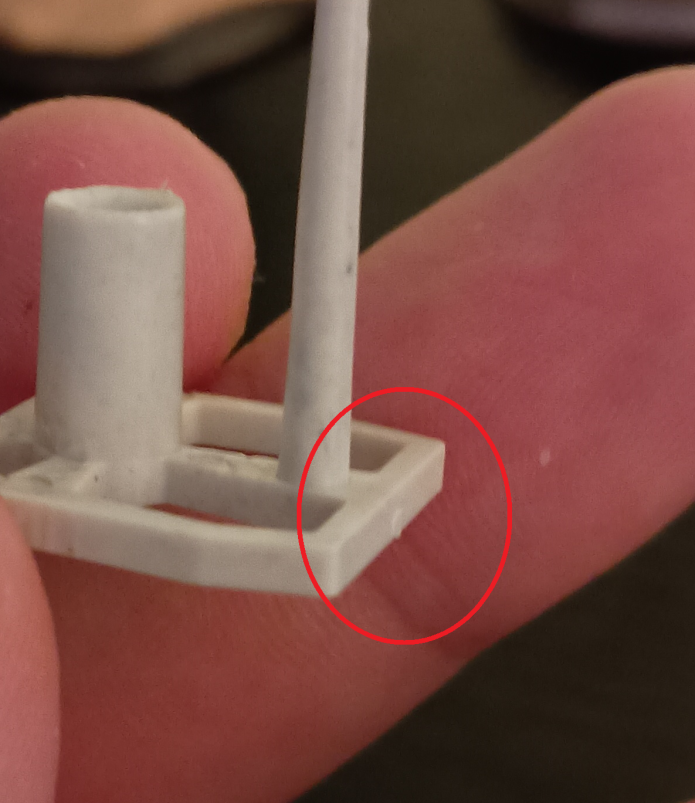
If you look closely you’ll see that there is a tiny rough patch. That’s the injection gate vestige, leftover from the hot plastic that goes into the mold. If you’ve ever done a model assembly, you’re familiar with this:
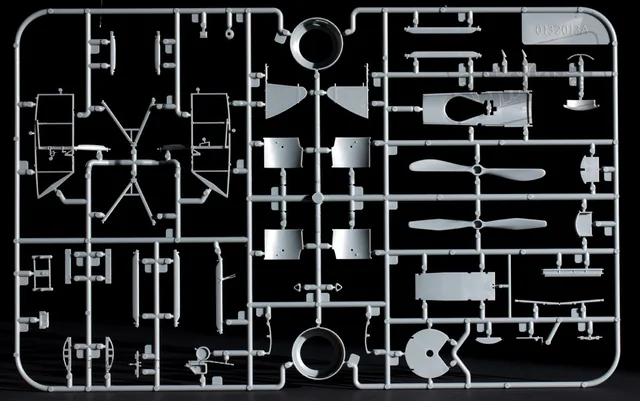
Now usually it breaks off very close to the part. In fact, we had no problems at all during our extensive testing. But then.
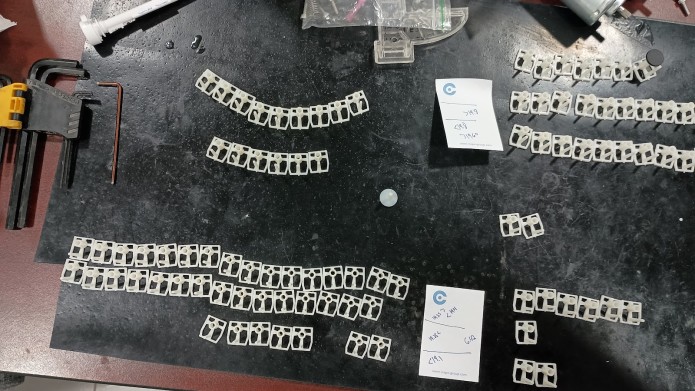
In the above image Ralf sorted the leftover from the small production batch (left) and a selection from the main production batch (right) by how big of a gate vestige is left. From bottom to top, we have almost no gate vestige to over one millimeter!
As you can guess from our added emphasis, one millimeter is kinda nuts. It juuusssttt barely moves the plunger out of alignment. It’s kinda hard to see by eye and impossible to take a picture of (which makes it fun to diagnose this issue) but after running dozens if not hundreds of Instafloss you can start to have a very good idea of how they are running based on the sound.
And there were several Instafloss during testing (when we just started production) that did NOT sound right. The solution is simple, of course – just add an instruction to the assemblers to cut the vestige off. And tell our supplier “hey, please make this not happen.”
So we’re all good. On the other hand, the stress from solving these problems has started making all of us go bald. Well, except Eli, he was that way when we started. ¯\_(ツ)_/¯


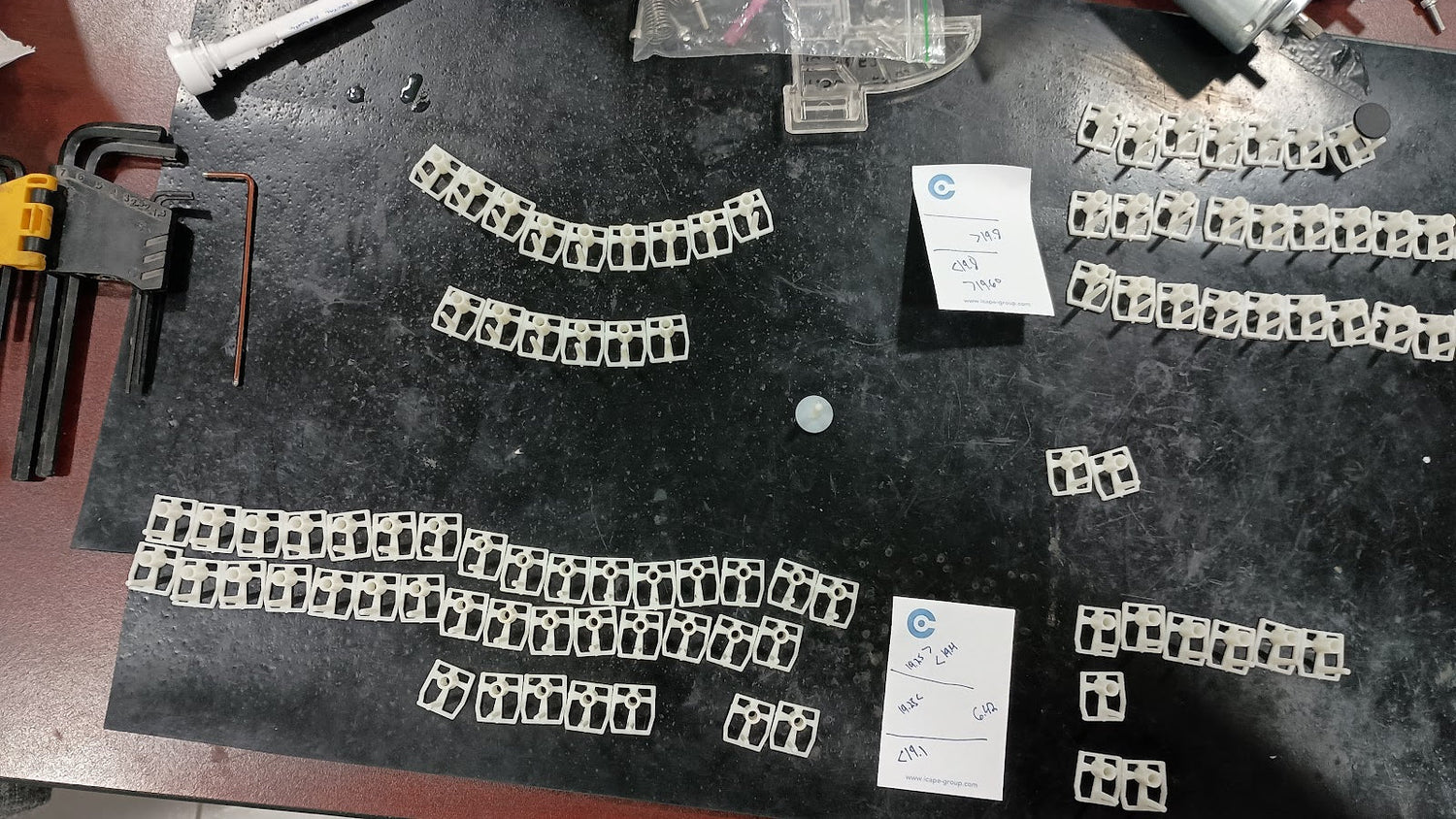
0 comments